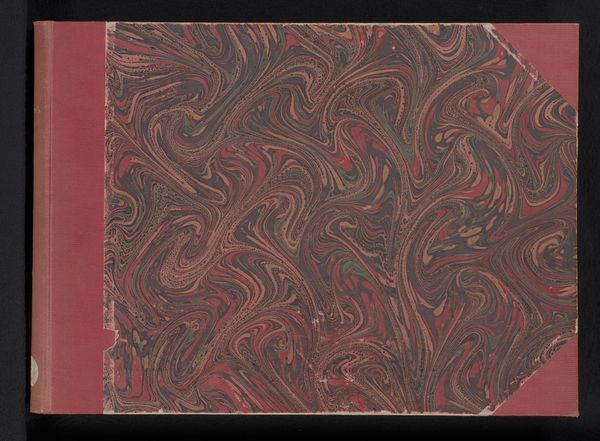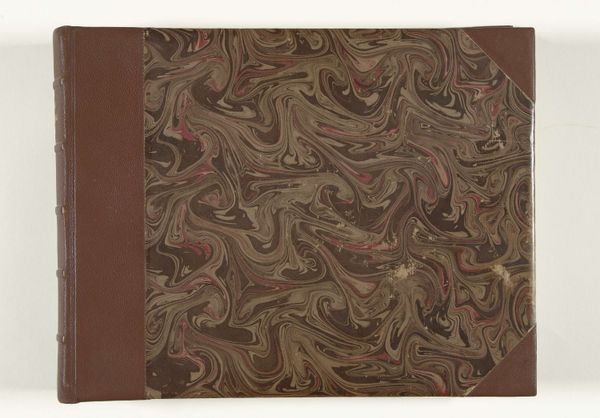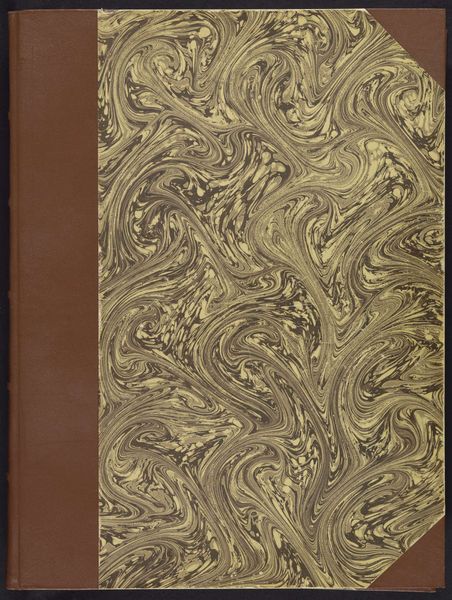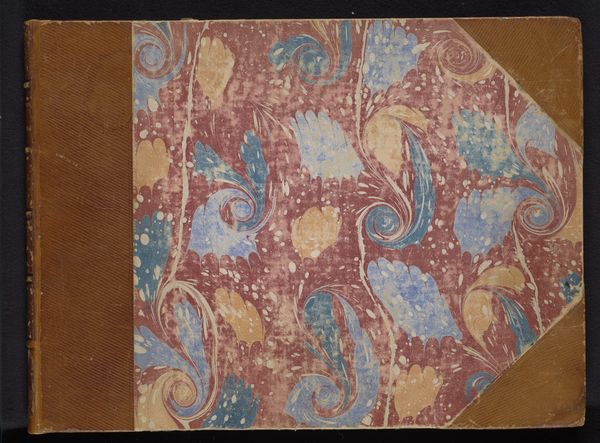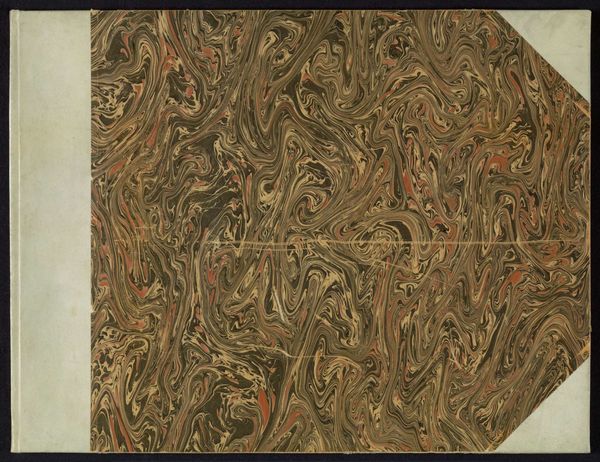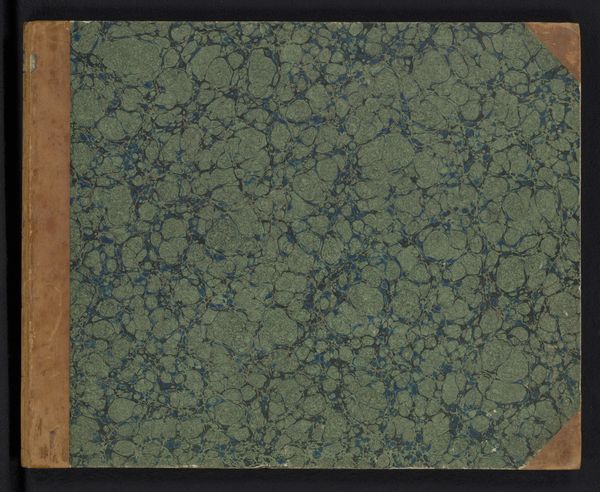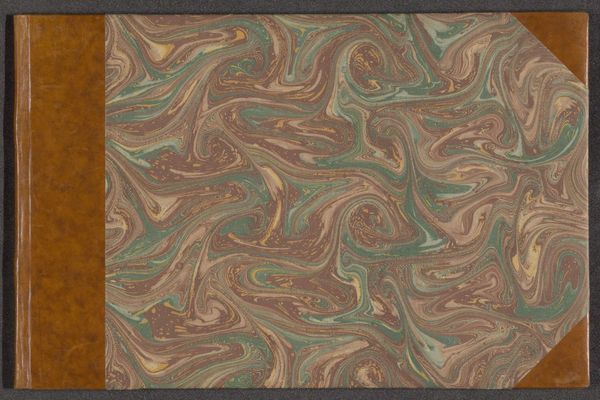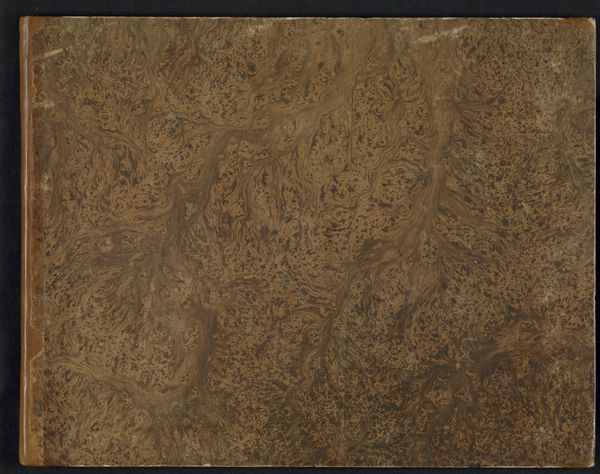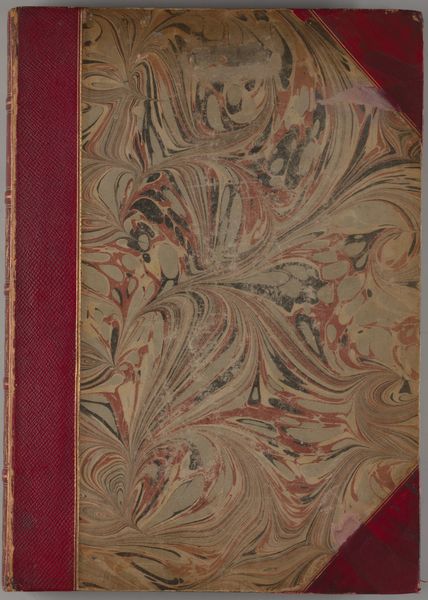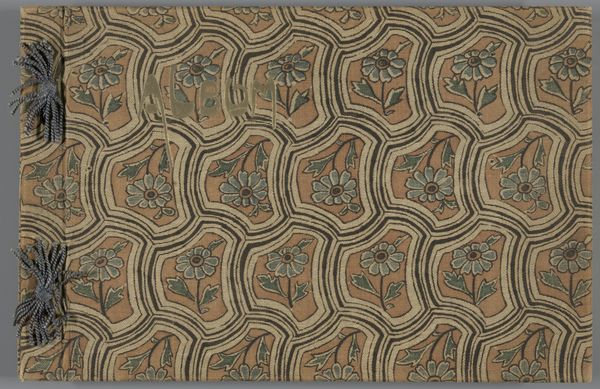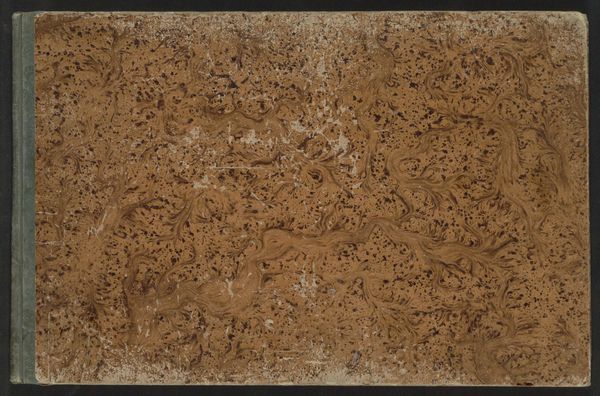
Album met piëdestals, postamenten, hoofdgestellen, consoles, kapitelen, gevels en vensters in de Dorische, Ionische, Korinthische, Composiete en Toscaanse Orde Possibly 1565 - 1899
0:00
0:00
johannesoflucasvandoetechum
Rijksmuseum
drawing, graphic-art, paper
#
drawing
#
graphic-art
#
natural stone pattern
#
naturalistic pattern
#
pattern
#
paper
#
geometric pattern
#
11_renaissance
#
subtle pattern
#
abstract pattern
#
organic pattern
#
wooden texture
#
intricate pattern
#
pattern repetition
#
layered pattern
Dimensions: height 273 mm, width 353 mm, thickness 12 mm, width 705 mm
Copyright: Rijks Museum: Open Domain
Editor: This is an intriguing album, purportedly created by Johannes or Lucas van Doetechum, dated sometime between 1565 and 1899. The cover exhibits a swirling pattern, almost like marbled paper, in earthy tones. What's your take on this as an artifact? Curator: It's fascinating precisely because of its status as an "album." The date range is wide, pointing to a prolonged period of production or use. This raises crucial questions about the materials themselves. What kind of paper is it? How was this marbled effect achieved? Was it mass-produced or handcrafted? These factors dictate its value as both a functional object and a potential art piece. Editor: So, you're thinking about the book as an object, beyond its artistic merit? Curator: Absolutely. The materials, the printing or marbling techniques, and the binding methods all speak to the economic and social conditions of its creation. Was this accessible to a wide market or a luxury item? Investigating the means of its production unveils a whole network of labor, skill, and material resources. It challenges the hierarchy often imposed between mere "craft" and "high art." The creation process can elevate a practical object. Editor: I see! So the pattern, although seemingly decorative, could hold clues about its socio-economic background. Curator: Exactly! The prevalence, or rarity, of that particular marbled design tells a story. It can open up investigations on how widely the material and its corresponding production processes were circulated, especially considering its rather large date range. What does it say about material consumption during this period? This object encourages us to look beyond aesthetics and into the realities of labor and production. Editor: That’s a really interesting perspective. It reframes how I see this – not just as a design, but as a product of a certain time and place. I'll definitely be considering that in my studies.
Comments
No comments
Be the first to comment and join the conversation on the ultimate creative platform.
